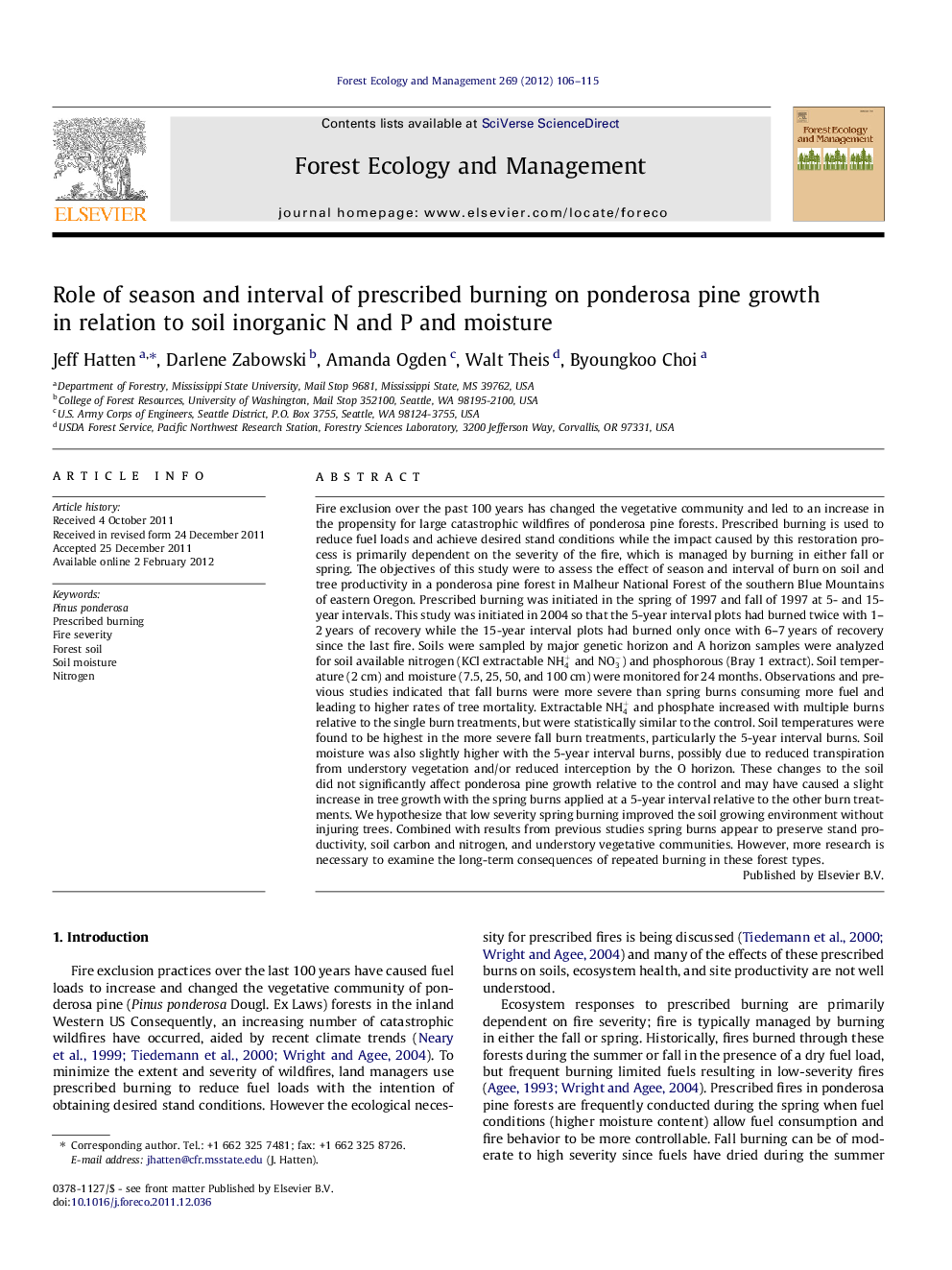| کد مقاله | کد نشریه | سال انتشار | مقاله انگلیسی | نسخه تمام متن |
|---|---|---|---|---|
| 87447 | 159251 | 2012 | 10 صفحه PDF | دانلود رایگان |

Fire exclusion over the past 100 years has changed the vegetative community and led to an increase in the propensity for large catastrophic wildfires of ponderosa pine forests. Prescribed burning is used to reduce fuel loads and achieve desired stand conditions while the impact caused by this restoration process is primarily dependent on the severity of the fire, which is managed by burning in either fall or spring. The objectives of this study were to assess the effect of season and interval of burn on soil and tree productivity in a ponderosa pine forest in Malheur National Forest of the southern Blue Mountains of eastern Oregon. Prescribed burning was initiated in the spring of 1997 and fall of 1997 at 5- and 15-year intervals. This study was initiated in 2004 so that the 5-year interval plots had burned twice with 1–2 years of recovery while the 15-year interval plots had burned only once with 6–7 years of recovery since the last fire. Soils were sampled by major genetic horizon and A horizon samples were analyzed for soil available nitrogen (KCl extractable NH4+ and NO3-) and phosphorous (Bray 1 extract). Soil temperature (2 cm) and moisture (7.5, 25, 50, and 100 cm) were monitored for 24 months. Observations and previous studies indicated that fall burns were more severe than spring burns consuming more fuel and leading to higher rates of tree mortality. Extractable NH4+ and phosphate increased with multiple burns relative to the single burn treatments, but were statistically similar to the control. Soil temperatures were found to be highest in the more severe fall burn treatments, particularly the 5-year interval burns. Soil moisture was also slightly higher with the 5-year interval burns, possibly due to reduced transpiration from understory vegetation and/or reduced interception by the O horizon. These changes to the soil did not significantly affect ponderosa pine growth relative to the control and may have caused a slight increase in tree growth with the spring burns applied at a 5-year interval relative to the other burn treatments. We hypothesize that low severity spring burning improved the soil growing environment without injuring trees. Combined with results from previous studies spring burns appear to preserve stand productivity, soil carbon and nitrogen, and understory vegetative communities. However, more research is necessary to examine the long-term consequences of repeated burning in these forest types.
► Examined prescribed fire effects on soil resources and ponderosa pine growth.
► Recently burned plots had more NH4+, and recent fall burn had elevated available P.
► Fire did not decrease tree growth and spring fires may have increased growth over fall.
Journal: Forest Ecology and Management - Volume 269, 1 April 2012, Pages 106–115